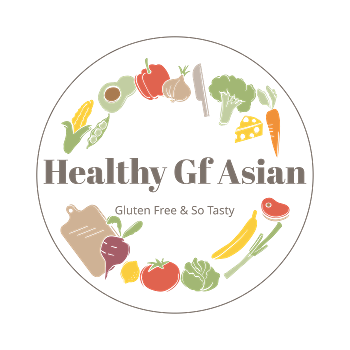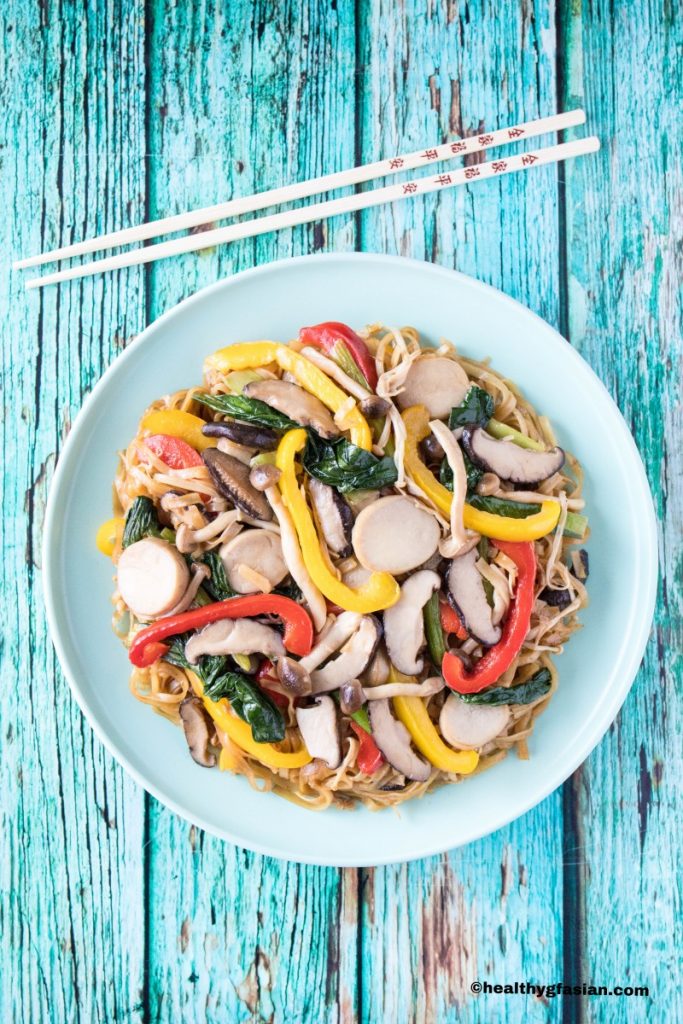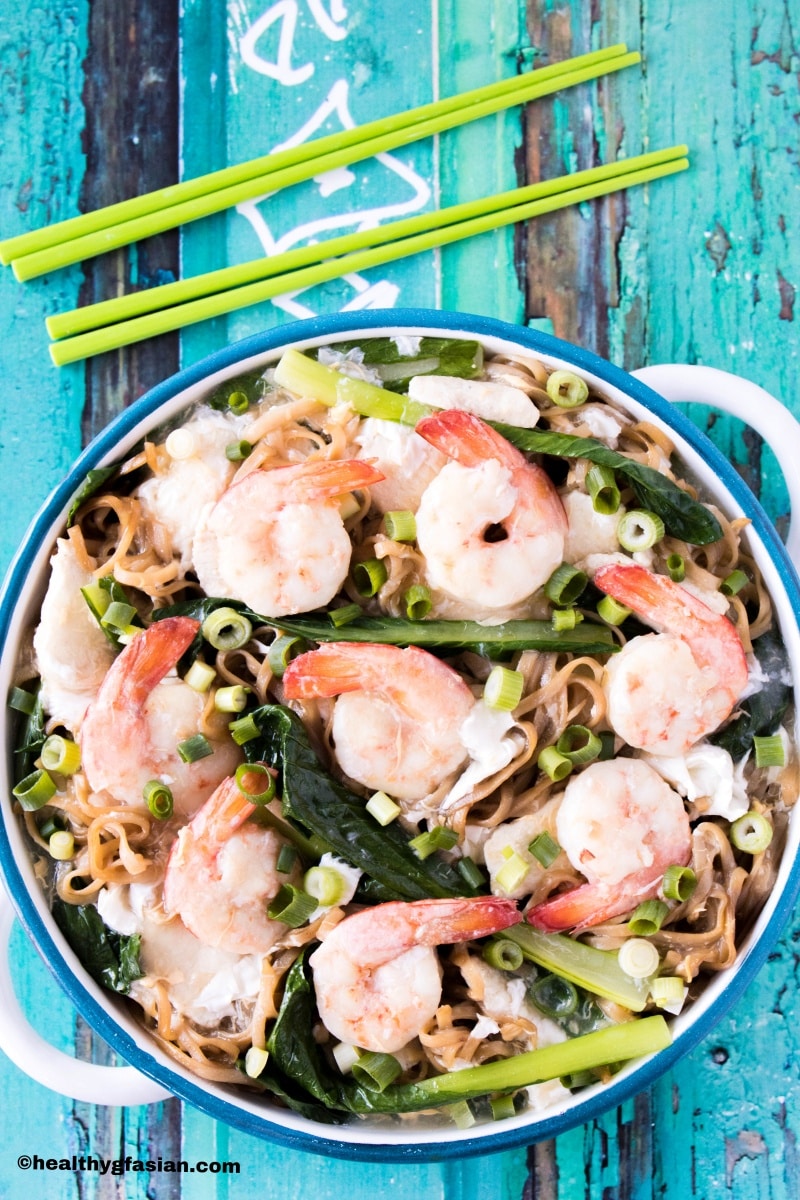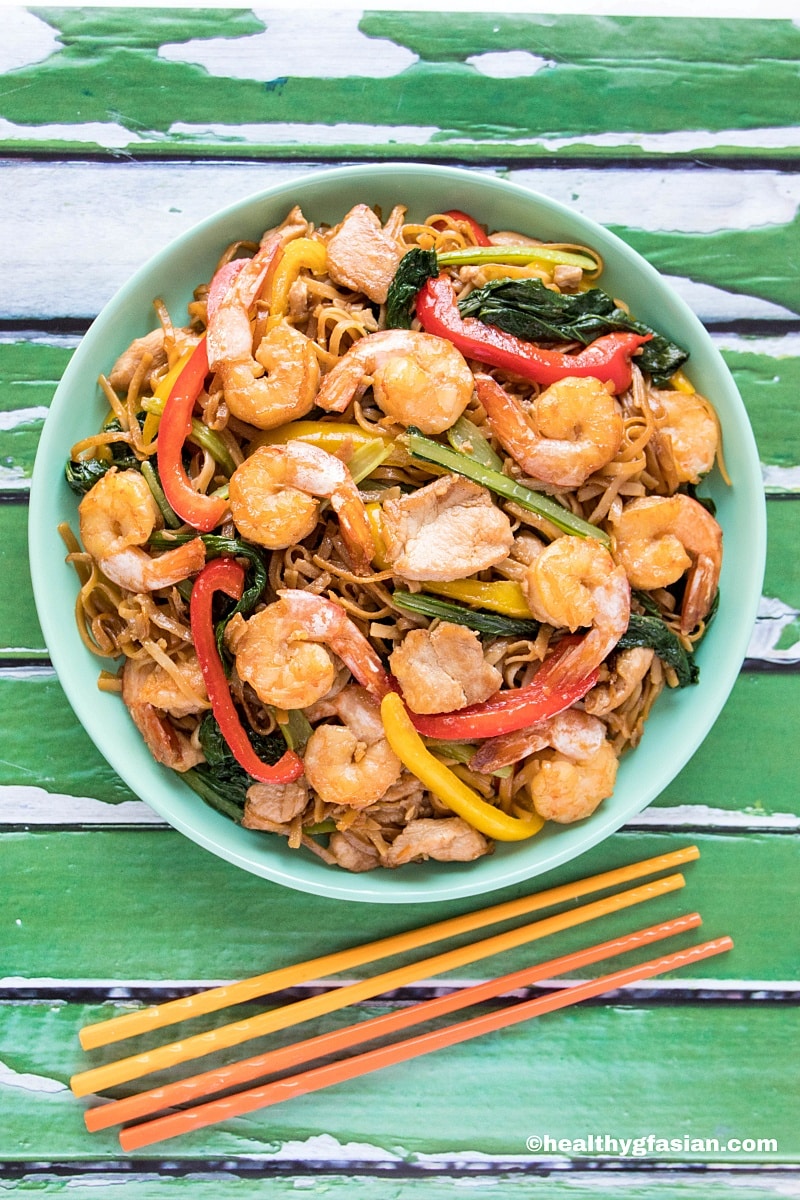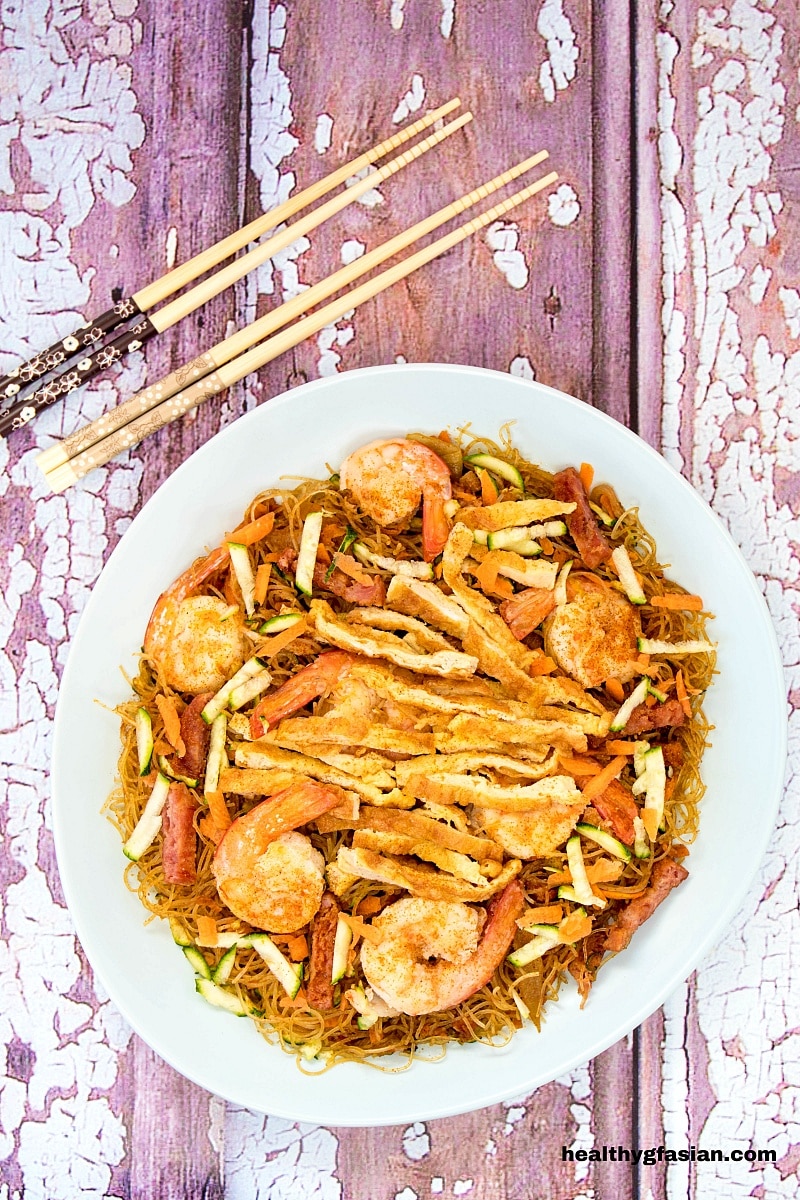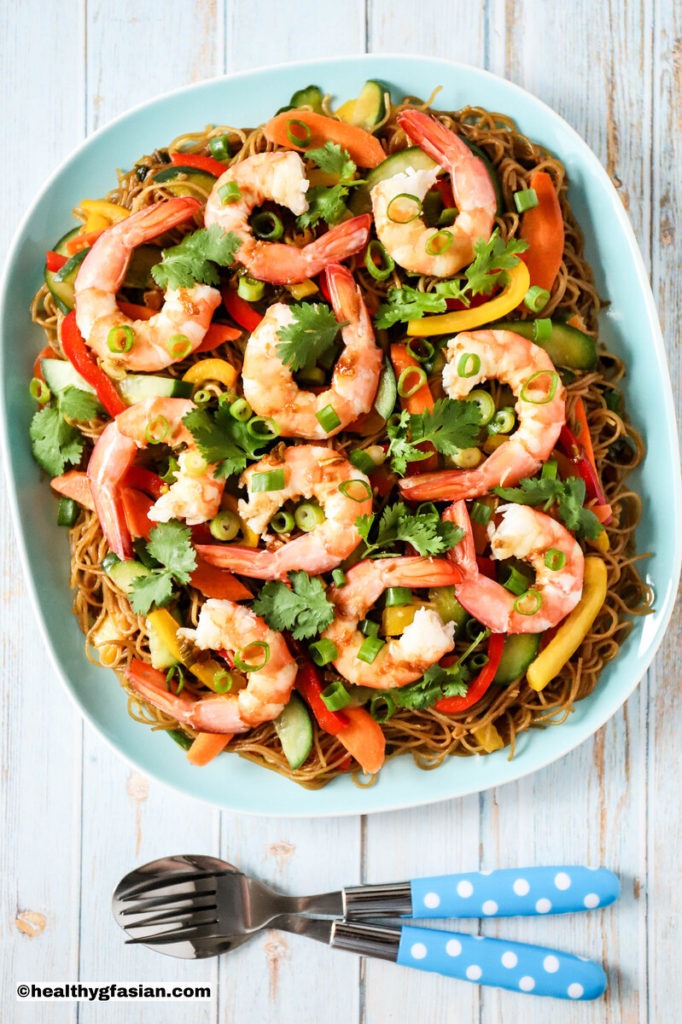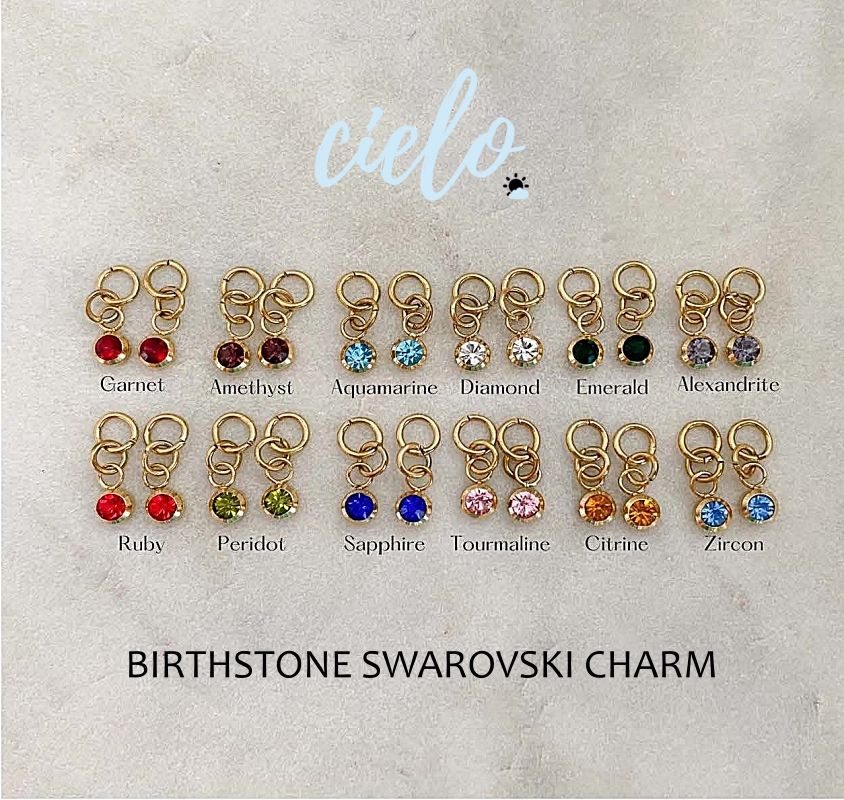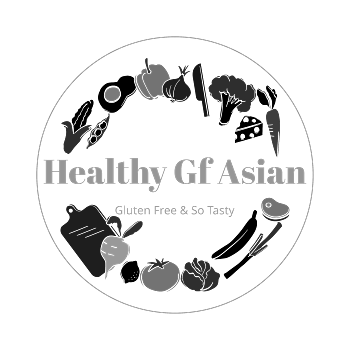“Guide for the assorted variety of Gluten-Free Asian Noodles available at supermarkets, Asian grocery and health food stores. Both online and brick & mortal stores.”
Table of contents
- Brief History of Asian Noodles
- Today’s Asian Noodles
- Versatility of Asian Noodles
- Read the Ingredients label and “May Contain” Statement
- Video for Gluten-Free Asian Noodles
- Different Types of Gluten-Free Asian Noodles
In fact, if you are a noodle devotee, and on a gluten-free diet due to health reasons or by choice. The wide options of gluten-free Asian noodles will have you spoiled for choice. Certainly, you can find them readily available in almost all supermarkets, Asian grocery, and health food stores. Moreover, if you have visited the noodles aisle of Asian grocery stores, the variety of noodles available is simply astonishing. And can be very confusing at the same time. In general, they group gluten-free Asian noodles according to the different category by key ingredients.
Look for gluten-free Asian noodles made with principal ingredients like rice, mung beans, sweet potato, and buckwheat. Alternatively, they also use key ingredients like pea, potato, tapioca, cassava, and yam. Occasionally, they use a combination of different starches to make these gluten-free Asian noodles. Each type of noodles has different shapes, lengths, widths, textures, and their own unique flavours.
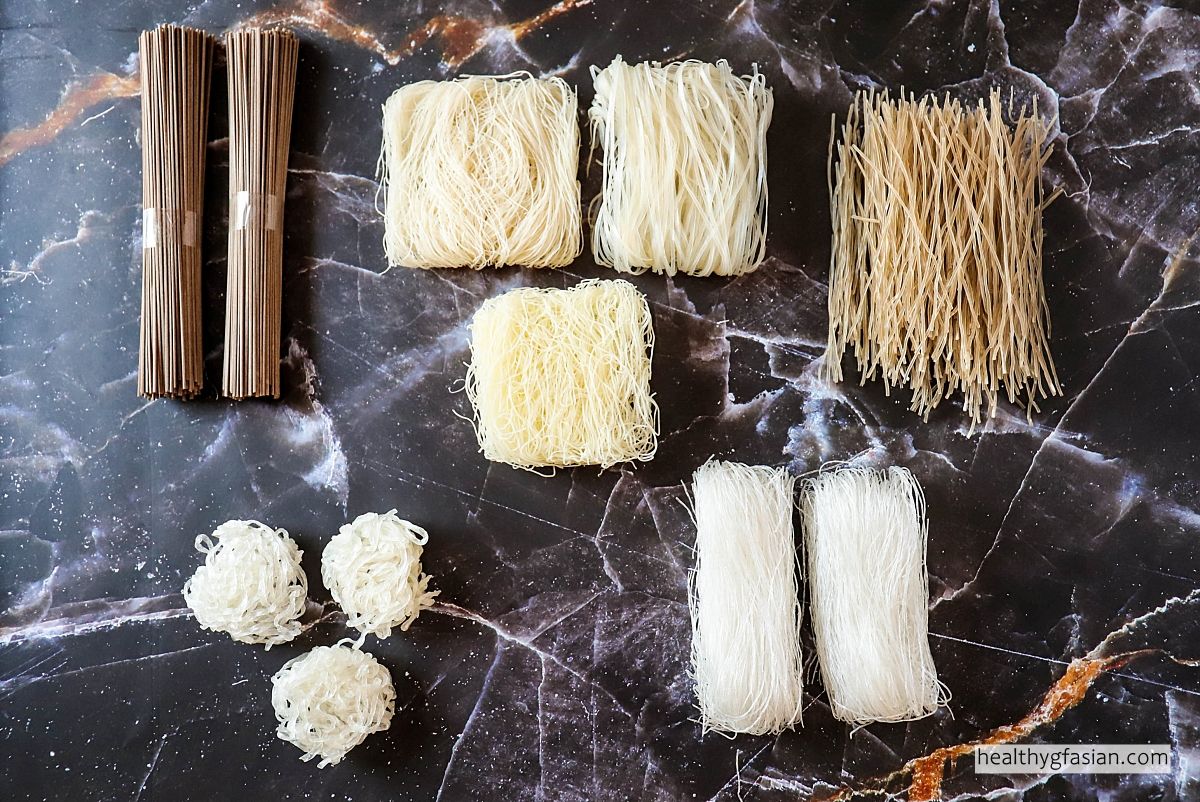
Top Left – Buckwheat Noodles. Middle – Rice Noodles. Top Right – Sweet Potato Noodles. Bottom Left – Shirataki Noodles. And Bottom Right – Mung Bean Noodles.
Brief History of Asian Noodles
Noodles have been a staple food for many in China since over four thousand years ago. During the Eastern Han Dynasty period (25–220 AD), ancient Chinese used millet flour to make the first Chinese noodles. Accordingly, the noodles were in the shape of strips or sheets and called bing or cake. During the reign of the Han Dynasty, wheat noodles became a staple food. Furthermore, they started making gluten-free Asian noodles with rice flour and starches. Above all, these starches include mung beans, peas, sweet potato, potato, and buckwheat.
Throughout the period of the Song Dynasty (960–1279 AD), noodles were very popular. They sold noodles in 24 hours specialty shops all over town. Subsequently, the noodles culture expanded into other East and Southeast Asia countries. Including Japan, Korea, Taiwan, Malaysia, Singapore, Cambodia, Thailand, Vietnam, and the Philippines.
Cultural Significance of Asian Noodles
Historically, noodles play an enormous role in Chinese cultural celebrations, special occasions, and festivals. Some examples are eating “longevity noodles” for birthdays, the long length of the noodles signify long life. Consequently, “Gravy noodles” for home buyers moving into their first new home or for weddings for flavours of life. As well as “dragon whisker noodles” on the first day of Chinese Lunar New Year for pleasant weather. In addition, there are many noodles with fascinating stories. Thus “dan dan noodles”, “dutiful son’s noodles”, “old friend noodles”, “sister-in-law noodles” and “crossing the bridge noodles”.
Today’s Asian Noodles
Many people throughout the world adore noodles. Particularly, in East and Southeast Asia, noodles are a crucial part of the diet and culture. They are delightfully delicious, with so many layers of flavours from the concoction of ingredients added. Anyone would love a plate of hot sizzling wok tossed noodles or a hearty bowl of comforting noodles in soup. Today, China is the largest consumer of noodles or mein in the world.
Overall, people eat thousands of types of noodles in China. They classified the noodles in accordance with the region, ingredients, shape, width, length, and cooking methods. Generally, the Northern Chinese eat wheat-based noodles as their regular food staple. Whereas the Southern Chinese consume rice noodles as a snack instead.
Versatility of Asian Noodles
By and large, there are many ways of cooking and serving Asian noodles. Cooking methods include stir-fried, steamed, deep-fried, boiled, or served in soup or sauce. Typically, they serve these noodles with accompaniments like meat, tofu, seafood, and vegetables. Above all, depending on your taste buds and dietary requirements, your options are wide-ranging. From the long list of gluten-free Asian noodles made from rice, vegetable starches and buckwheat. Nonetheless, the recipe itself will tell you which type of gluten-free Asian noodle to use.
Generally, they sell most of the gluten-free Asian noodles in dried form in the markets. Besides, you can store them in a cool, dry place in your pantry or cardboard. If you are unsure of which noodle to choose, do not worry. Below is my inside scoop on shopping for gluten-free Asian noodles from the broad choices available on the markets.
Read the Ingredients label and “May Contain” Statement
It is important to always read the ingredients list label and the “may contain” statement on the packaging. To ensure that the gluten-free Asian noodles that you are purchasing have no wheat flour or wheaten corn starch added. As well as being free from any cross contamination from sharing the same equipment in manufacturing and packing facilities. As they also process other allergens like gluten, nuts, milk, sesame, corn, soy, etc.
Video for Gluten-Free Asian Noodles
Different Types of Gluten-Free Asian Noodles
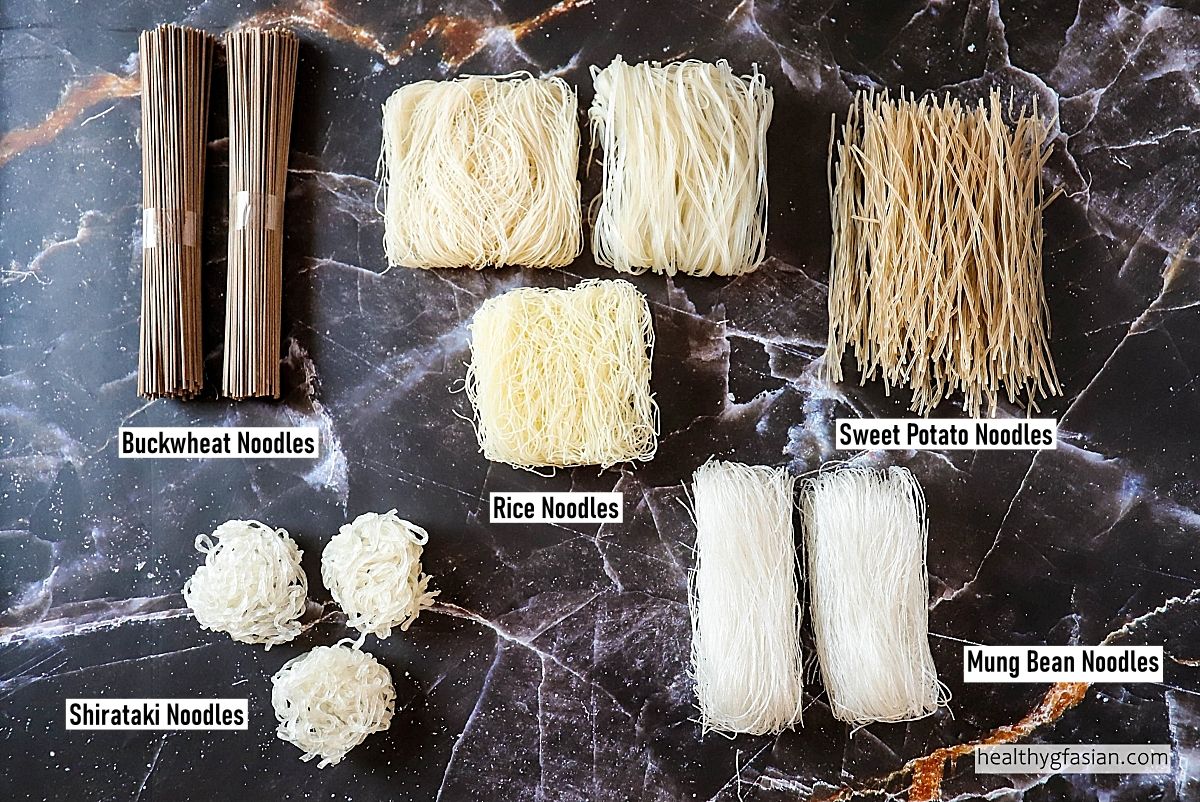
Variety of Rice Noodles
Rice noodles are a broad variety of gluten-free Asian noodles that come in a selection of shapes and sizes. And they make these noodles from rice flour and water. By and Large, rice noodles vary in thickness from super-thin and fragile rice vermicelli to long and flat rice sticks. Also, they are readily available in many Asian grocery stores and supermarkets. Take note that only rice noodles made with 100 percent rice flour are gluten-free and usually available in dried forms. Likewise, rice noodles have soft and bouncy texture and are bland with mild rice flavour. And will absorb any flavours that you cook them in, either robust or delicate.
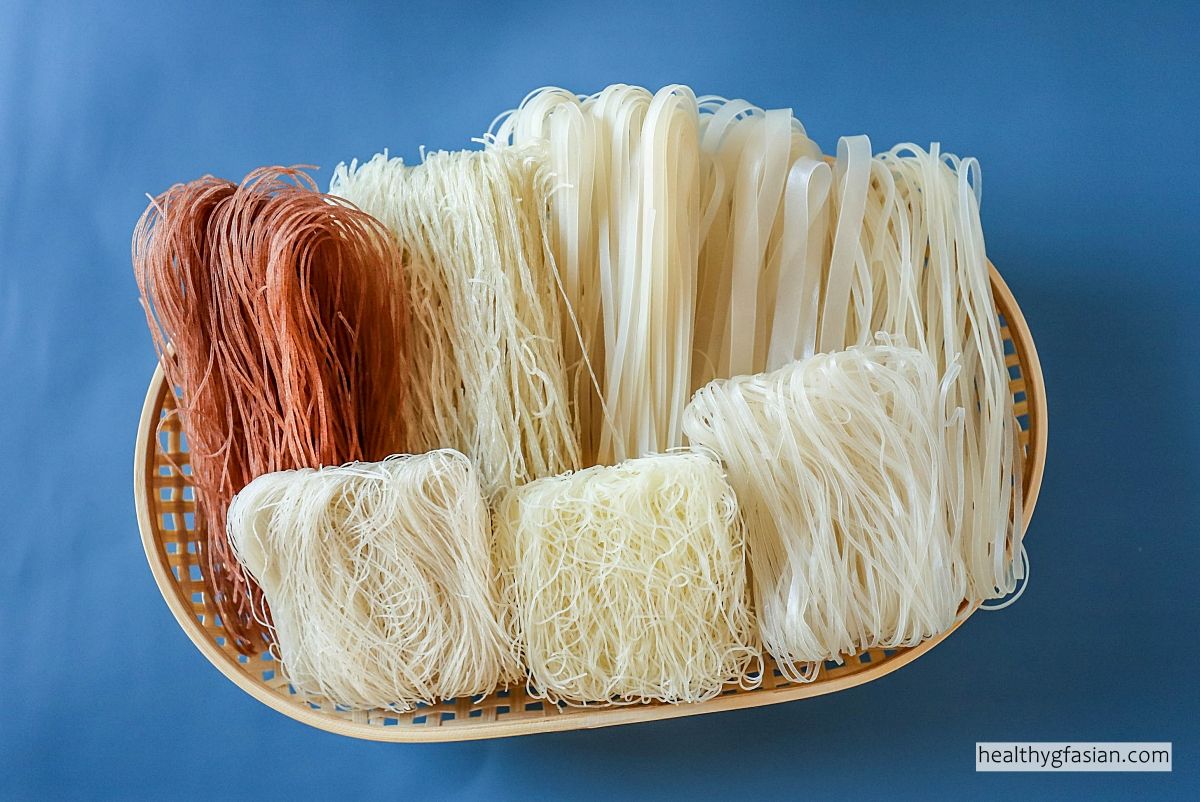
Different types of rice noodles made with white and brown rice with different thickness, length and width.
Rice Vermicelli
This is the thinnest type of gluten-free rice noodles that are very fine and flimsy. We use them in many dishes, from salads, stir-fries to soups. And even deep fried into puff up and very crispy nests for saucy dishes and as fillings in spring rolls. They also call rice vermicelli mi fen in Chinese, mai fun in Cantonese and bee hoon in Hokkien. You only need to rehydrate rice vermicelli in just-boiled water briefly for 1 to 2 minutes before cooking further. Rice vermicelli is particularly great in curry Laksa and rice paper rolls.
Modern variations of rice vermicelli include brown rice, pumpkin and yam. They use rice vermicelli in many regional delicacies in Southern China. Singapore Fried Noodles is the most famous dish using rice vermicelli.
You may also like my Pork and Choy Sum Stir-Fry Rice Noodles and Fish Cakes with Rice Noodles recipes.
Rice Sticks
These gluten-free Asian noodles come in 3 distinct sizes. Round and thin rice noodles, medium flat rice noodles for Vietnamese pho and wide flat rice noodles for pad Thai. Additionally, some supermarkets and Asian grocery stores sell dried extra-wide rice sticks for cooking char kuey teow and hor fun. Rice sticks are springy and tough, making them the perfect ingredient for stir-fries as they do not break apart.
Similarly, you only need to soak rice sticks in hot water for a short time. To soften before you finish cooking. Remember to rinse cooked noodles every time in cold water to remove excess starch prior to cooking with the recipe. They often sell popular dry, wide and flat rice sticks noodles named as gluten-free Pad Thai noodles in the markets.
Check out my gluten-free Pad Thai, Seafood Char Kuey Teow and Beef and Zucchini Stir-Fry Noodles recipes.
Note:
You can find pre-packaged fresh flat and wide rice noodles like kuey teow or hor fun in Asian grocery stores. However, they most often contain added wheat flour, wheat starch, or wheaten corn starch. Always read the ingredients list cautiously and buy only well-labeled packages.
Gluten-Free Asian Noodles Recipes Using Rice Noodles
Nutritional Values and Health Benefits of Rice Noodles
The most widely used with the most variety of gluten-free Asian Noodles is rice based noodles. Nonetheless, they are not only highly adaptable for many Asian recipes but remarkably delicious too! Furthermore, rice noodles provide essential nutrients. They are low fat, low FODMAP, and low sodium. Likewise, rice noodles are both gluten-free and vegan. Boiled dried rice noodles have medium GI and fresh rice noodles have low GI. In addition, they are an excellent source of phosphorus, manganese, and selenium. Rice noodles are also a good source of fiber, iron, copper, and zinc.
The overall health benefits of rice noodles may include:
- Boost the body’s immune system;
- Support normal thyroid function;
- Help regulate blood sugar level;
- Assist in healthy metabolism;
- Maintain healthy bones and teeth;
- Aid in Kidney filtration;
- Lower risks of cardiovascular diseases; and
- Reduce risks of certain types of cancer.
Where to Buy Rice Noodles
Almost all supermarkets and Asian grocery stores, both retail outlets and online, sell all varieties of rice noodles. They are also available on Amazon online.
Cellophane Noodles (Starch-Based Noodles)
Cellophane noodles are another extensive category of starch-based gluten-free Asian noodles. And they make them with vegetable starches instead of rice or wheat flour. Other names for cellophane noodles are glass noodles, bean threads, bean vermicelli, crystal noodles or fensi in Mandarin.
Mung Bean Noodles
Mung beans (Vigna radiata), also known as green gram, are tiny, green beans that belong to the legume family. They make these type of mung bean noodles from pure mung bean starch. Whereas they named Chinese sweet potato noodles Fentiao or Hongshufen. These noodles can also include using starches like pea, potato, tapioca, and yams.
Normally, they sell cellophane noodles in dried form, and they have plastic like appearance in their raw form. Cellophane noodles only require soaking briefly in hot water for 1 minute or less. Once rehydrated, they look transparent, glass-like and slippery. Their texture is gelatinous and soft with a vaguely nutty flavour. They are great for when you want to thicken up the soups, stir-fries, braises or stews. We can also use them in salads and for fillings in spring rolls as well.
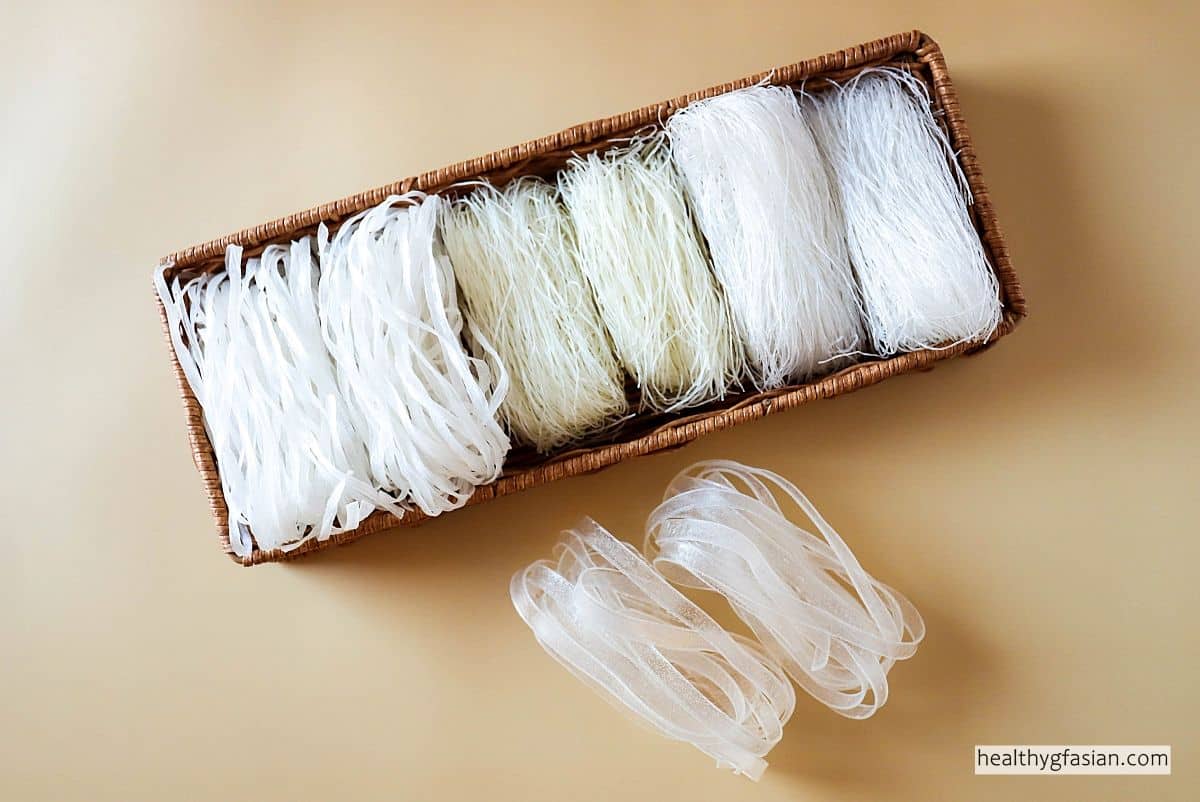
Top Left – mung bean mix with potato starch noodles. Middle – mung bean mix with pea starch & corn starch. Top Right & Bottom Middle – pure mung bean noodles.
Nutritional Values and Health Benefits of Mung Bean Noodles
Mung bean noodles are the most common and most widely used Chinese cellophane or glass noodles. Generally, mung bean noodles are abundant in many essential vitamins and minerals. Furthermore, these mung bean noodles are a superb source of iron and choline. They are also a good source of vitamin B1 (thiamine), selenium, copper, and phosphorus. Even though mung bean noodles are low GI, they have high FODMAP as a legume. They are gluten-free, and suitable for people on vegan and paleo diets.
On the whole, the health benefits of mung bean noodles may include:
- Boost your body’s immune system;
- Promote healthy cardiovascular system;
- Support normal thyroid function;
- Assist in normal cell functions.
Where to Buy Mung Bean Noodles
Most supermarkets and Asian groceries stores, both retail outlets and online, sell some types of mung bean noodles. They are also available on Amazon online.
Sweet Potato Noodles
In Korean cuisine, dangmyeon is their own version of slightly thicker, longer, and tougher sweet potato vermicelli. They usually make them with Korean white and purple sweet potato. In general, they use these noodles in popular Korean Stir-fries called Japchae or in braises or stews and soups. While Harusame is the Japanese version of cellophane noodles. And they make these Japanese noodles mainly with sweet potato and sometimes potato starch. Mostly, they use Harusame in Japanese salad noodles dishes. Because these Korean and Japanese versions are thicker, they are not as absorbent as the Chinese glass noodles.
Where to Buy Sweet Potato Noodles
Most Asian groceries stores and some supermarkets, either retail outlets or online, sell sweet potato noodles. They are also available on Amazon online.
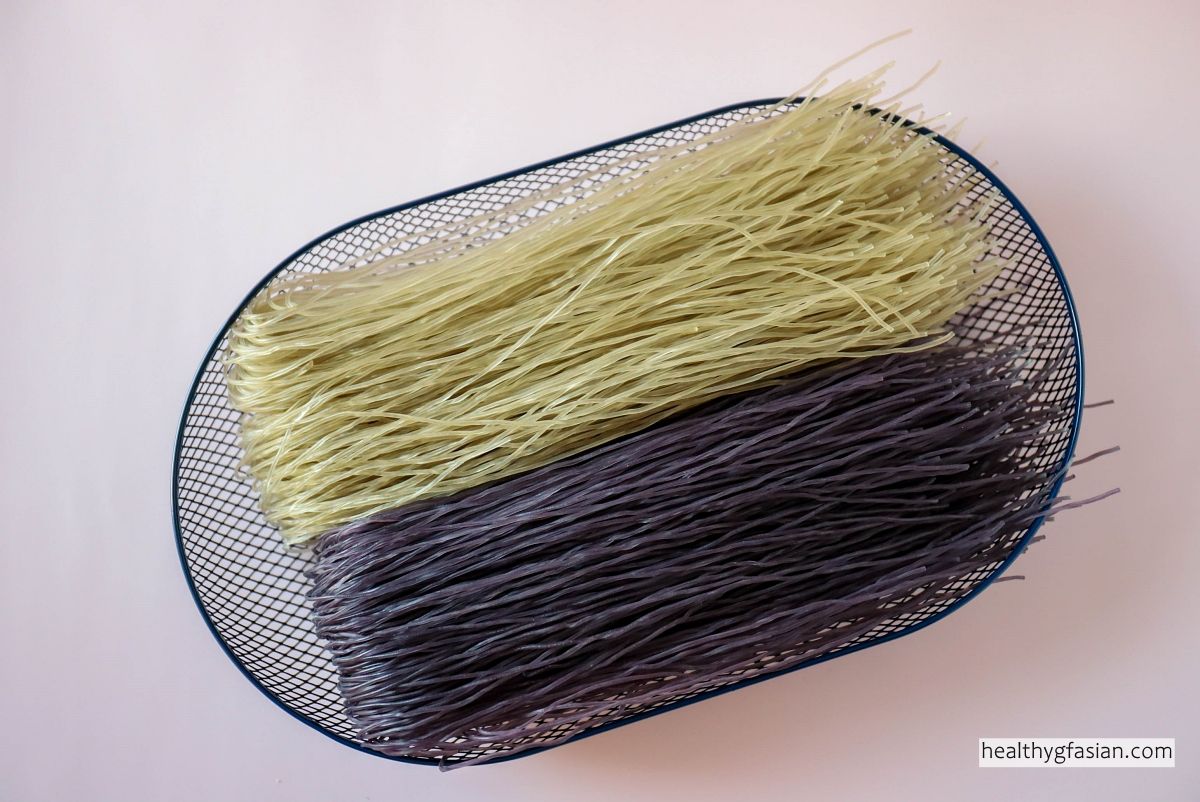
Korean white & purple sweet potato noodles.
Potato Noodles
Another type of Chinese starch-based noodles is potato noodles. They make them with potato starch and water. The kneaded pure potato starch dough is very stretchy, smooth, and extremely easy to work with. The resulting potato starch noodles are extremely chewy. But they taste excellent when added to hot pots, salads, braises, stews, casseroles, and soups. However, they are less popular and less widely available than other types of starch-based Asian noodles. Most popular way of enjoying this type of potato starch noodles is in Sichuan hotpots.
Where to Buy Potato Noodles
Some Asian grocery stores, either retail outlets or online, sell potato noodles. They are harder to find compared to other types of gluten-free Asian noodles.
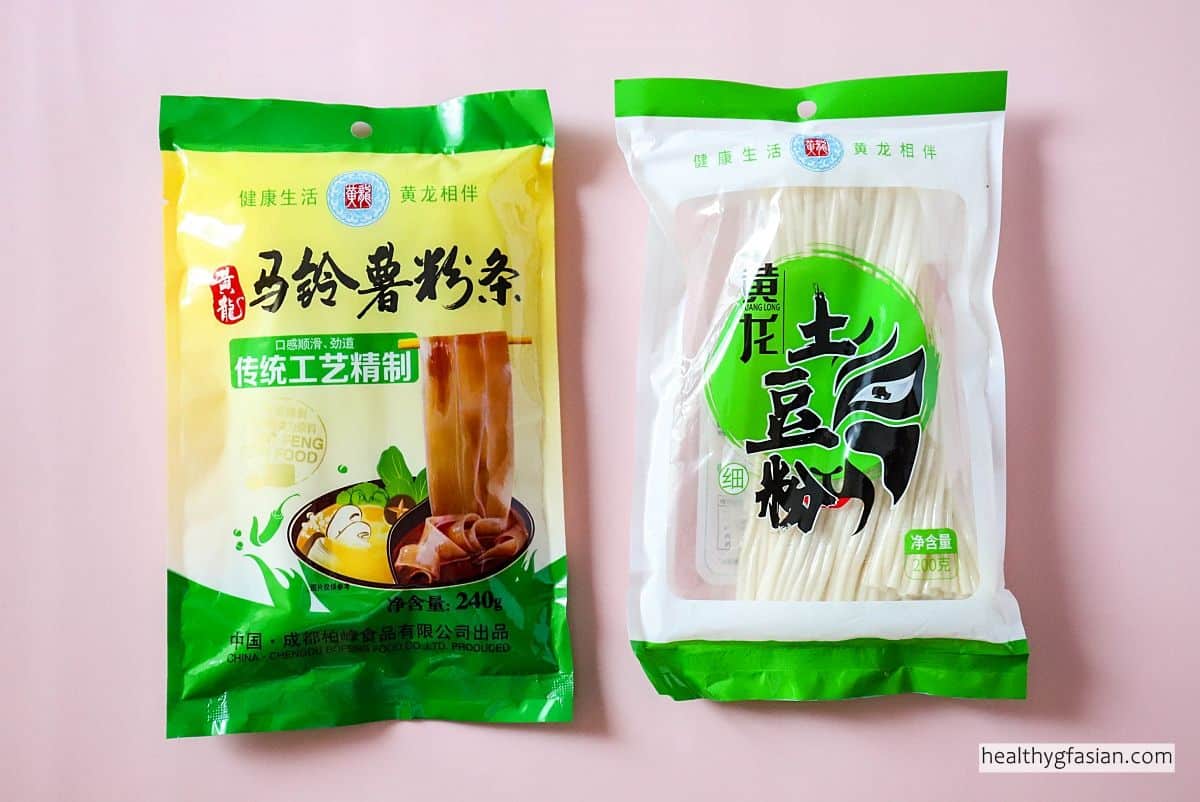
Left- potato starch mix with cassava starch & soy bean. Right – pure potato starch noodles.
Nutritional Values of Sweet Potato and Potato Noodles
Korean sweet potato noodles are low calorie, low sodium, low GI, low FODMAP, fat free, cholesterol free, and low carb. They are not only gluten-free, but vegan and paleo too. However, they have a small amount of dietary fiber, low in protein, and are low in essential vitamins and minerals. Besides, for the popular Korean Japchae stir-fries, you can still have a delicious, nutritious, and balanced meal. You can get your protein, essential vitamins and minerals from lean meat and eggs. Plus, all the colourful vegetables added to the dish, including spinach, shiitake mushrooms, carrots, etc.
Potato starch noodles are naturally gluten-free, vegan and paleo. It is fat-free and low FODMAP, but consists entirely of carbohydrates and has no essential nutrients.
Both sweet potato starch and potato starch are a good source of resistant starch. The small intestines do not digest this type of starch. Instead, good bacteria in the large intestine will ferment resistant starch as a prebiotic. Resistant starch helps people feel fuller for longer after a meal. Despite this, sweet potato and potato starches are not a significant source of essential vitamins and minerals.
Health Benefits Sweet Potato and Potato Noodles
By and large, the health benefits of sweet potato starch and potato starch noodles may include:
- Support healthy digestive system;
- Help regulate blood sugar level;
- Increase insulin sensitivity in the body;
- Decrease risks of inflammatory bowel disease and colon cancer;
- Boost your body’s immune system; and
- Assist in weight management.
Buckwheat Flour Noodles
Buckwheat (Agopyrum tataricum), also known as black wheat, despite its name suggests, is not a type of wheat. It is a plant bearing small triangular brown grain like seeds. And a fruit that belongs to the rhubarb family and an ancient, treasured seed. In fact, they believed Tibetan monks were the first ones who made handmade noodles with buckwheat flour.
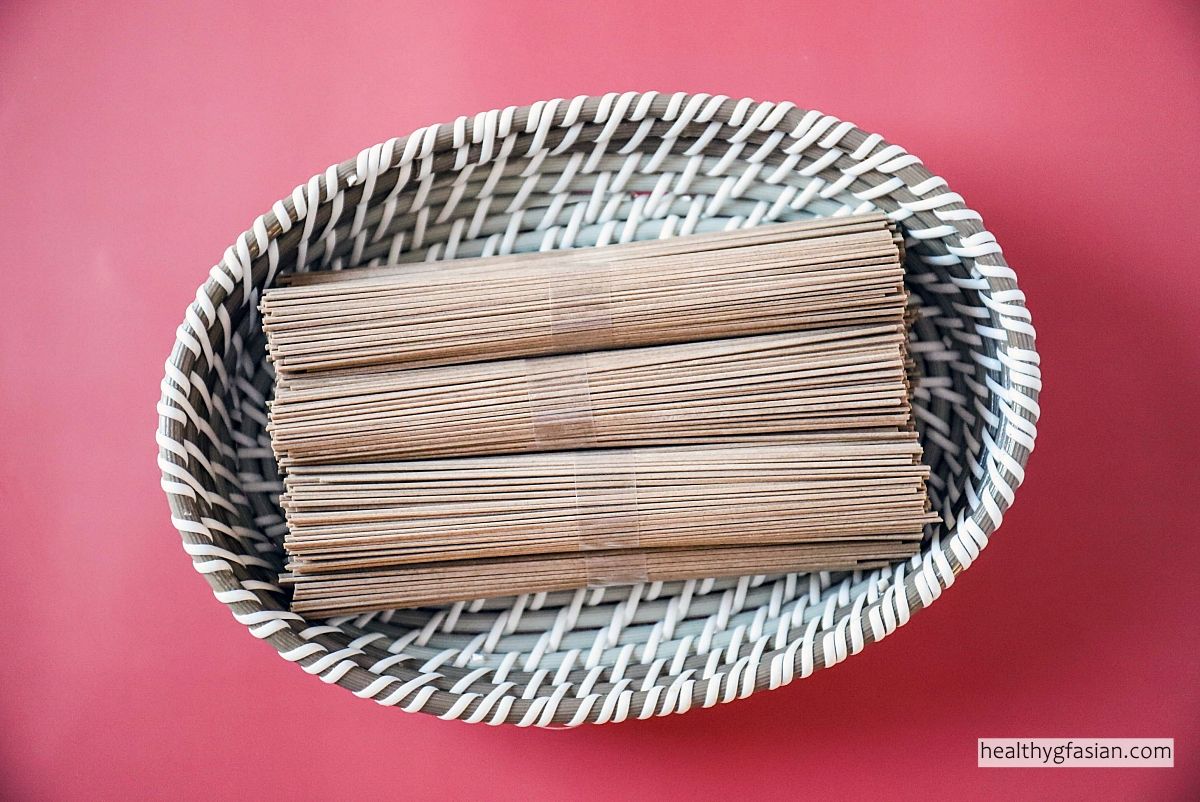
Only 100 percent buckwheat noodles are gluten-free.
Soba Noodles
Soba is a celebrated classic noodle that takes its name from the Japanese name for buckwheat. Generally, they are beige or light brown in colour, long, thin and round. They usually sell these noodles dried and they come in serving size bunches with ribbons around them. Additionally, Soba noodles are famous for their strong earthy and distinctly nutty flavour. They are most well-liked when served in a cold broth and added to salad during summer. Likewise, they also serve these noodles hot either in broth or drained, and with dipping sauces on the side.
Most of the dried soba noodles sold in the supermarket and Asian grocery stores are not gluten-free. Note that these off the shelves soba buckwheat noodles normally include wheat flour and tapioca flour added in. Only 100 percent soba buckwheat noodles are gluten-free.
Naengmyeon Korean Noodles
Naengmyeon is Korean’s equivalent to Japanese Soba. They make it with buckwheat flour boosted with sweet potato starch. Sometimes they use either potato, arrowroot, or pea starch instead. Other names for these noodles are Raengmyeon, naengmyun, or mul naengmyeon. They are darker brown than soba, normally sold dried, serving size bundles, long, thin, and round. Once cooked, they are soft, bouncy, slightly jelly-like and chewier than soba noodles.
The most popular way of serving these noodles is in cold broth. Occasionally, they shave ice into the metal serving bowl to keep the noodles cool. In addition, they serve them in hot dishes too. Most store bought naengmyeon noodles have wheat flour added. When purchasing, always read the ingredients label to ensure that they are gluten-free.
Nutritional Values and Health Benefits of Buckwheat Noodles
Buckwheat noodles are fat and cholesterol-free, high in soluble fiber, gluten-free, vegan, low GI and low FODMAP. Likewise, it is an excellent source of manganese and a superb source of lean protein, and vitamin B1 (thiamine). Buckwheat also has flavonoids compounds with strong antioxidants and anti-inflammatory properties.
Overall, the superb health benefits of buckwheat noodles may include:
- Support healthy cardiovascular system;
- Help regulate blood sugar level as it is low GI;
- Lower risks of diabetes and some cancer;
- Maintain a good digestive system;
- Aid in weight loss;
- Reduce risks of arthritis and osteoporosis;
- Improve health of the central nervous system; and
- Boost the body’s metabolism function.
Where to buy 100% Buckwheat flour Noodles
You can find 100% buckwheat flour noodles at Amazon online. And health food stores and specialty stores, both retail outlets and online.
Shirataki Noodles
Shirataki noodles are traditional Japanese noodles, and they make them from konjac yam of the konnyaku plant (amorphophallus konjac). We also known them as konjac yam noodles, devil’s tongue noodles, and miracle noodles. They also named these noodles Ito konnyaku (a thicker version of shirataki noodles) in Japanese. Shirataki means “white waterfall” in Japanese, named for its wraithlike appearance of the noodles.
Additionally, shirataki noodles are white, long, translucent, and gelatinous noodles with rubbery texture. They sell them in supermarkets, Asian grocery, and health food stores, mainly in wet-packaged form. Although dried shirataki noodles are also available.
Even though you can eat shirataki noodles raw, it is advisable to rinse them in warm water. Then boiling them to remove the starchy and fishy odour. But the dried form of shirataki noodles does not have the smell. They cook quickly, like other starch-based noodles. And are mostly flavourless but highly versatile and suitable for a good deal of gluten-free Asian noodles recipes. They are great in stir-fries, salads, and soups.
Most popularly used in Traditional sukiyaki of Japanese beef hot pot. Otherwise you can just include shirataki noodles in a simple Ponzu noodle bowl.
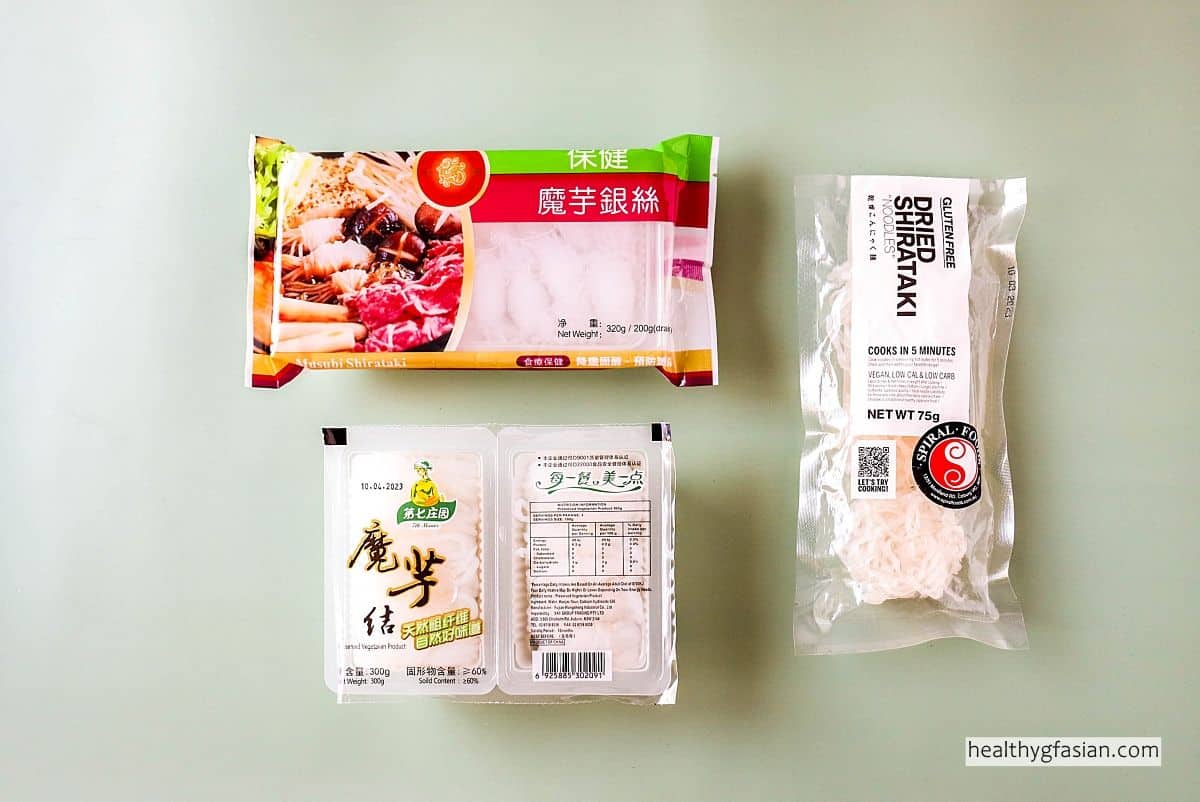
Wet-packaged form & dried form.
Tofu Shirataki Noodles
The Japanese chef make tofu shirataki noodles from mixing tofu with shirataki flour. The result is less rubbery, springier, and more slippery noodles than the original shirataki noodles. Tofu shirataki noodles are opaque and light yellow in colour. And have slightly more protein and carbohydrate than the authentic shirataki noodles. You can only buy them cooked and they require brief reheat before eating.
Nutritional Values and Health Benefits of Shirataki Noodles
In recent years, they marketed shirataki noodles as a health food because of its superb health benefits. They are low carb, low calorie, low GI of zero, cholesterol-free, fat-free, sugar-free, vegan, keto and naturally gluten-free. Some brands of shirataki noodles are also low FODMAP. Moreover, they are rich in glucomannan fibre. Which is a type of soluble fibre that acts as prebiotics, promoting healthy bacteria growth in the colon.
In addition, this type of fibre takes longer to digest and leave you feeling full for longer. Making them a fantastic gluten-free Asian noodles substitute for wheat-based Asian noodles.
In particular, the health benefits of shirataki noodles may include:
- Assist in weight management;
- Lower blood sugar and insulin levels;
- Help reduce cholesterol level; and
- Support healthy digestive system.
Where to Buy Shirataki Noodles
Shirataki noodles and tofu shirataki noodles are available on Amazon online store. Shirataki noodles are widely available at most supermarkets and Asian grocery stores. As well as health food and specialty stores, both retail outlets and online.
Kelp Noodles
Kelp noodles are slim and translucent noodles made from a type of brown seaweed, water and salt. Also other known names for this type of noodles are angel threads, angel noodles or cheon sa chae in Korean. There is no flour or starches added to make these noodles. They normally use kelp noodles in Korean cuisine. Kelp noodles have gained popularity because of the increased awareness of healthy diets by many.
Besides, they have springy texture with mild flavour. And will soak up the taste of whatever dishes that you cook them in. But you need to give them a good rinsing to remove the saltiness prior to adding to any recipe. Ways to enjoy kelp noodles are raw, added to salads, soups, and stir-fries.
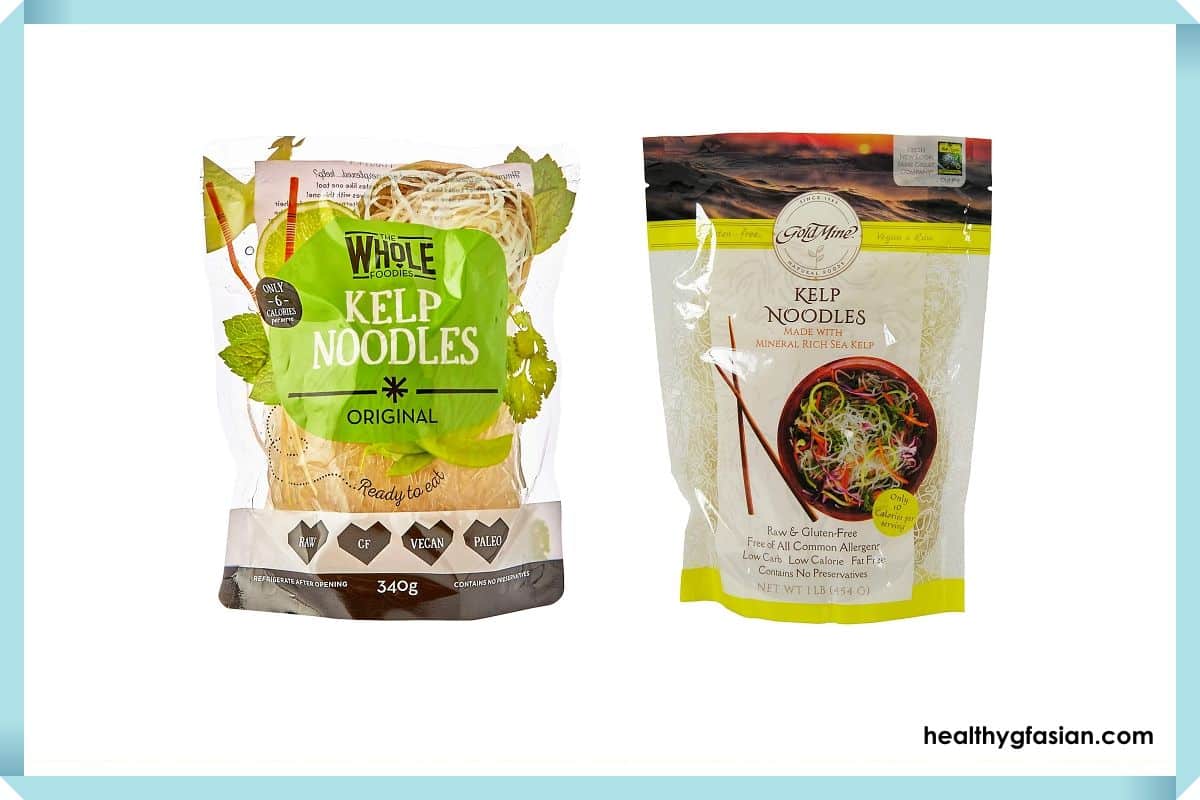
Nutritional Values and Health Benefits of Kelp Noodles
There are several types of essential nutrients in kelp noodles. On the whole, they are a good source of dietary fiber, magnesium, calcium, iron, and vitamin K. Furthermore, kelp noodles are iodine rich, low calorie, low FODMAP, fat free, and almost zero carb. They are not only gluten-free, but vegan, paleo and keto too. However, bear in mind that kelp noodles are naturally rich in sodium.so you do not need to use added salt.
Specifically, the health benefits of kelp noodles may include:
- Support healthy thyroid function;
- Assist in weight management;
- Promote bones and teeth health;
- Enhance the cardiovascular system;
- Boost the body’s immune system; and
- Help maintain a healthy digestive system.
Conclusion
There are so many different categories and sub-categories of gluten-free Asian noodles mentioned above. All you have to do now is choose the type of noodles that best suit your dietary needs and preferences. Alternatively, give each type of noodles a try with various gluten-free Asian recipes. Then you can decide on which ones are your favourite gluten-free Asian noodles. Lastly, don’t forget to read the ingredients list and may contain statement on the packaging before buying these noodles.
